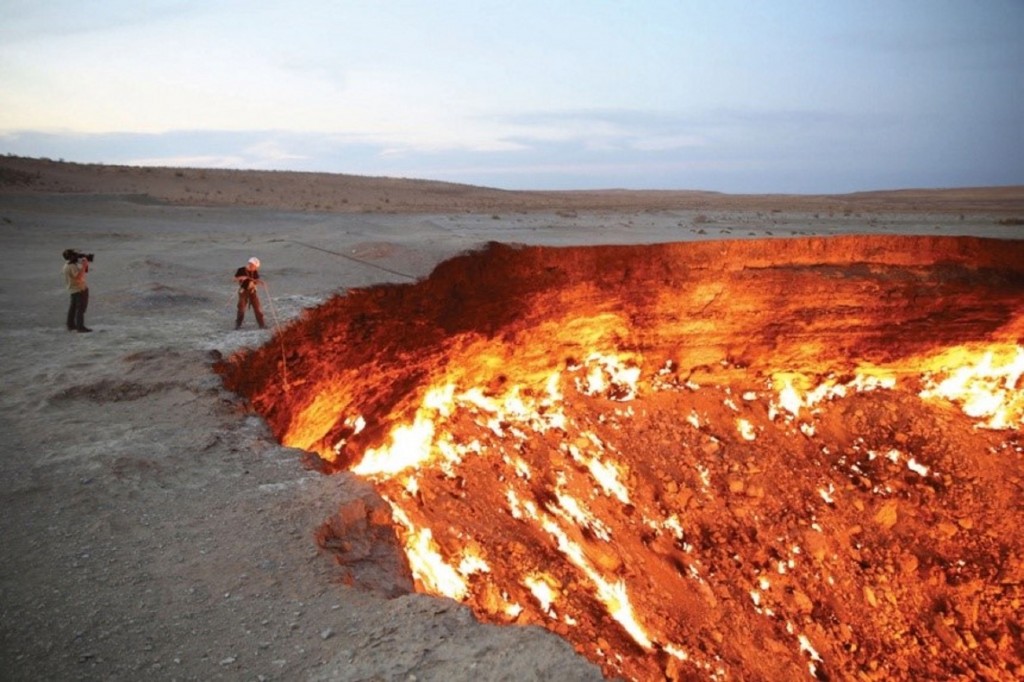Both brownfield and greenfield sites have the potential to develop ground gas from various sources. Ground gas is often associated with landfill sites or areas of deep made ground; however sources can also include natural sources depending on the underlying geology.
As a worst case, build-up of ground gasses can lead to property damage and has serious health implications for those exposed. In the most extreme cases explosions can result from a build-up of methane and carbon dioxide can lead to asphyxiation. The importance of monitoring ground gas can often be overlooked and a case from Turkmenistan shows just how dangerous ground gas can be.
Known locally as ‘The Door to Hell’, Derweze crater is located in the Karakum Desert of Turkmenistan. In 1971 Soviet geologists stated drilling a borehole at the location to prospect for gas. According to reports the drilling equipment suddenly drilled into and underground cavern and a deep sinkhole formed. The drilling equipment was lost but thankfully no-one lost their life. Fumes could be smelt coming from the hole and a decision was made to set light to the crater in order to prevent people being affected by dangerous gasses that were escaping. Forty four years later the crater is still alight and stands as a symbol to how important the gas reserves of Turkmenistan are.
The crater measures some 69 metres wide and 30 metres deep and is located in the natural gas field in Ahal Province, the sixth largest gas reserve in the world. The crater is unique and the only one of its kind known to be burning for such an extensive length of time. In the past few years the cavern has been the centre of new research to discover if life is able to exist in such extreme temperatures and was the focus of a National Geographic documentary. The Turkmenistan Government are also hoping to promote its existence in order to generate more tourism in the area. Located in the centre of a desert that ranges in temperature between 50oC in the summer and -20oC in the winter, the site isn’t ideal for tourism. There are no road signs to the crater which is located some 270km north of the capital, but local guides know where to find it and say that it is becoming increasingly more popular with foreign tourists due to the mesmerising flames and heat given off by the crater which looks stunning at night.


